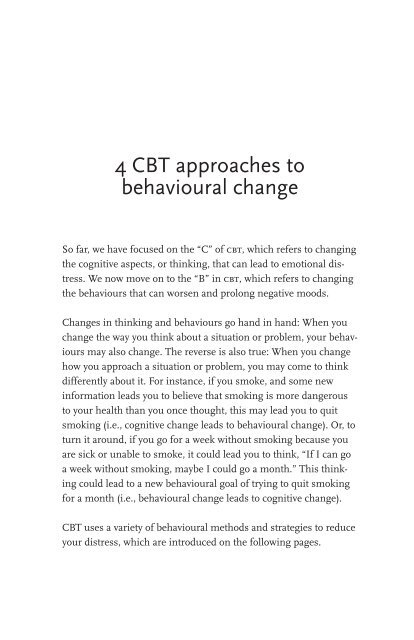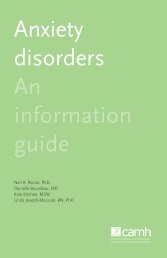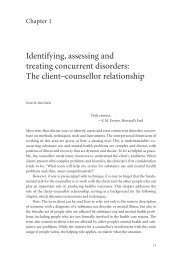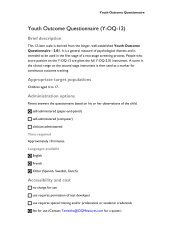Cognitive-behavioural therapy: An information guide - CAMH ...
Cognitive-behavioural therapy: An information guide - CAMH ...
Cognitive-behavioural therapy: An information guide - CAMH ...
Create successful ePaper yourself
Turn your PDF publications into a flip-book with our unique Google optimized e-Paper software.
24<br />
4 CBT approaches to<br />
<strong>behavioural</strong> change<br />
So far, we have focused on the “C” of cbt, which refers to changing<br />
the cognitive aspects, or thinking, that can lead to emotional distress.<br />
We now move on to the “B” in cbt, which refers to changing<br />
the behaviours that can worsen and prolong negative moods.<br />
Changes in thinking and behaviours go hand in hand: When you<br />
change the way you think about a situation or problem, your behaviours<br />
may also change. The reverse is also true: When you change<br />
how you approach a situation or problem, you may come to think<br />
differently about it. For instance, if you smoke, and some new<br />
<strong>information</strong> leads you to believe that smoking is more dangerous<br />
to your health than you once thought, this may lead you to quit<br />
smoking (i.e., cognitive change leads to <strong>behavioural</strong> change). Or, to<br />
turn it around, if you go for a week without smoking because you<br />
are sick or unable to smoke, it could lead you to think, “If I can go<br />
a week without smoking, maybe I could go a month.” This thinking<br />
could lead to a new <strong>behavioural</strong> goal of trying to quit smoking<br />
for a month (i.e., <strong>behavioural</strong> change leads to cognitive change).<br />
CBT uses a variety of <strong>behavioural</strong> methods and strategies to reduce<br />
your distress, which are introduced on the following pages.

















